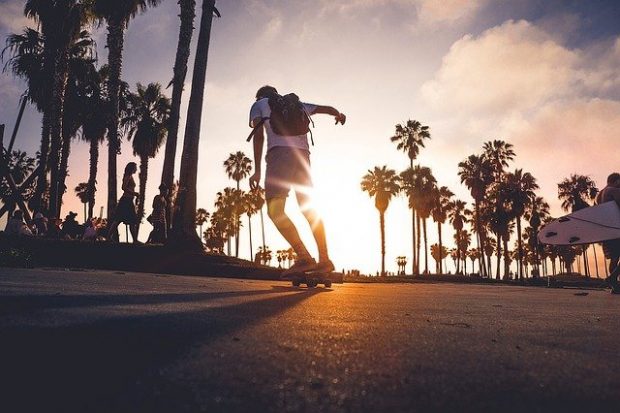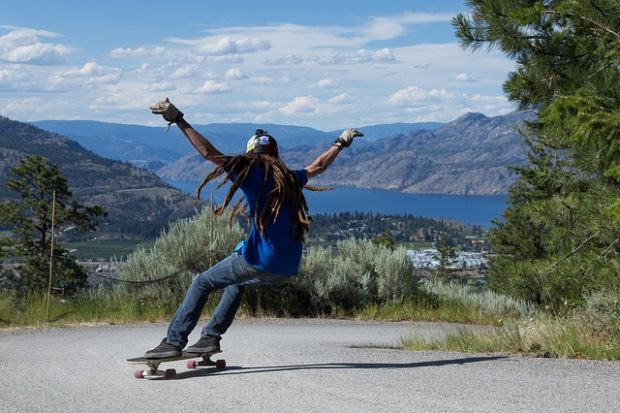Learn Which Skateboarding Riding Style Is Perfect For You
While longboarding is a relatively new activity, its roots can be traced back to the invention of skateboards. When surfers would visit the mainland from Hawaii in the 190s, they were surprised by the terrain which lacked the waves. So they decided to improvise and create a surfboard-like device they could use to glide down hills and across streets. The device was designed to provide better balance and easier turning, and it was called a longboard. This sport is an excellent way to get a good workout and experience the joys of riding an inexpensive piece of equipment that you can take anywhere.

Some longboarders like to do tricks to show off their talent, but it can also be just about enjoying the ride. When you are out skating, you can go to many places that you couldn’t get to with a car. You can also go faster and farther because you can push yourself on a longboard without getting tired. It can be challenging for those just getting started to know which style will suit their personality. However, with practice, you will find that you begin to pick up a manner suited to you. Here are four of the better-known riding styles.
Cruising
This is the most common style, and it is pretty much exactly how it sounds. You kick the board and simply cruise, enjoying the ride. It is the best style for beginners as it is an easy method to understand. Moreover, when you are coasting along, you will understand the reasons for longboarding becoming so popular. This is a benefit because it will keep you interested in the sport and more able to pick up the other techniques later.
Most people who cruise will opt for a board that has more flex in the body to better deal with the bump along the road surface. The flex acts like a kind of suspension, and you will feel the difference when cruising over long distances (which you will be because it is so fun!). For this reason, a longer board is usually favored over the shorter varieties.
Best Suited For: People of a chilled disposition.
Freestyle
Freestyle is not the same as freeride, which we will cover next, but instead, it is all about the flair and the tricks involved. It is definitely the most flashy style of riding and takes a lot of time to master. Nevertheless, once you have mastered this art, you will boost confidence when casually flipping tricks and becoming famous as the guy with the mad skills! Freestyle is a more creative and freestyle of boarding that can be enjoyed in most places with open areas. Freestyle boards are often shorter and have a more pronounced kicktail when compared to other models.
Best Suited For: Creative people with slightly larger egos.

Freeride
This is where you will be introduced to the downhill and speed aspects of the sport. It involves tricks and technical ability, so it is perhaps better suited to those with a bit of experience under their belts. There are numerous ways to freeride, but the most common trick is sliding, a form of drifting around a corner at high speed. Whether you find that this style is for you or not, sliding is a beneficial skill to learn as it can help slow you down in a controlled manner, thus avoiding any nasty injuries. Other tricks are often performed when freeriding, and it is up to the rider how much speed they want to sacrifice for the tricks. The boards are often medium length and with a stiffer body than cruising and freestyle boards. Board flex is undesirable in freeriding.
Best Suited For: Creative speed junkies.
Downhill
Now we come to the craziest and adrenaline-inducing style of them all, downhill. This is a style that you will come to eventually as it is not recommended for beginners. This technique is all about the thrill of the speed. Downhill racers are highly proficient in carving and sliding skills, and they really know how to control their board at speed. If you have a need for speed, then you will naturally gravitate to this style, but you will need far more equipment than the others in this guide. Full face helmets and motorbike clothing are not an uncommon sight in downhill races, and for a good reason. The speed attained can be insane, and you need as much protection as possible in the unfortunate event that you fall off. Downhill boards are far stiffer than other boards and will have softer, grippier wheels to help maintain stability at high speed.
Best Suited For: Speed/ adrenaline junkies.

Types Of Longboard
Longboards have different designs, but the most common are the drop-through and top-mount. While many prefer drop-through boards, they are not suitable for beginners as they tend to be heavy and difficult to control. Some of the main board options are:
Drop through: The skateboard appears normal, but the deck contains a cutout.
Carving: Midrange wheelbase and decent flex.
Cruising: Longboards with pintails are perfect for relaxed cruising.
Bamboo: Flexible, lightweight, and just looks cool.
Fishtail: A fishtail longboard is similar to a Pintail but with a touched tail allowing sharper turns.
Blunts: Blunt longboards are known for their durability and stability and are blunted on their nose and tail.
Mini Cruiser: Longboards with the smallest footprint are the mini cruiser boards.
Cut Out: Longboards with cutouts feature ample wheel clearance. They are a more advanced design.
Speed Board: Designed for high speed and high stability.
Freeride: Fun to ride but can feel unforgiving and unresponsive.
Electric: A longboard that has a motor attached. Some people love them; others think they are an abomination.
Skating with this type of board is a popular form of skateboarding where the rider uses a longboard instead of a skateboard or a shortboard. Longboards are often much longer than a skateboard, and they usually feature larger wheels and a larger deck. The more oversized deck and wheel size allow the rider to cover a greater distance with each push of the feet. The extra length also allows the rider to perform all types of tricks that a skateboard could not handle. The choice of style that you will eventually adopt has a lot to do with your personality. Nevertheless, you should give each style a good go before knowing which option is best for you.
